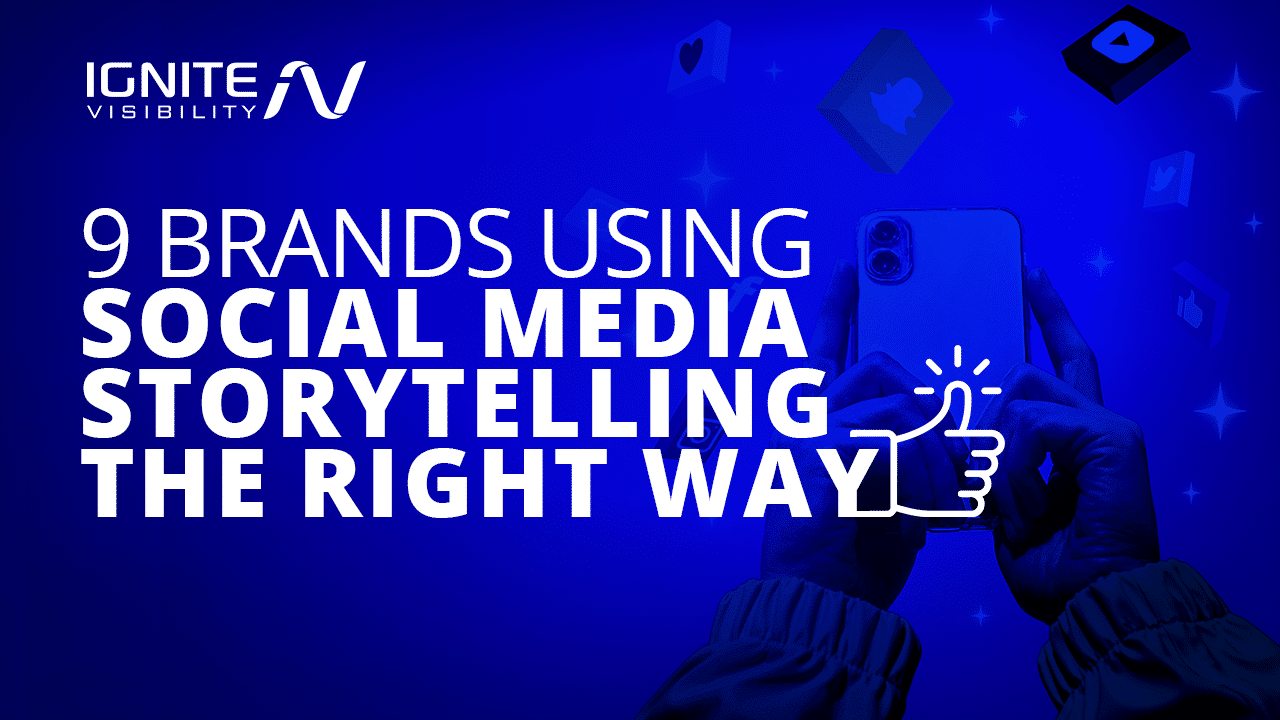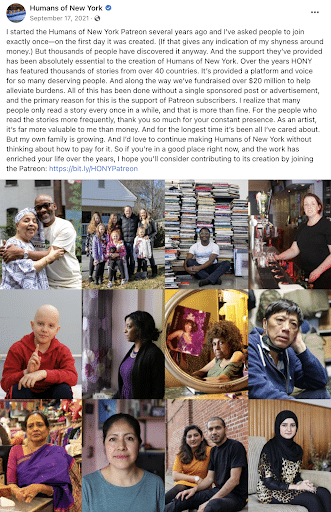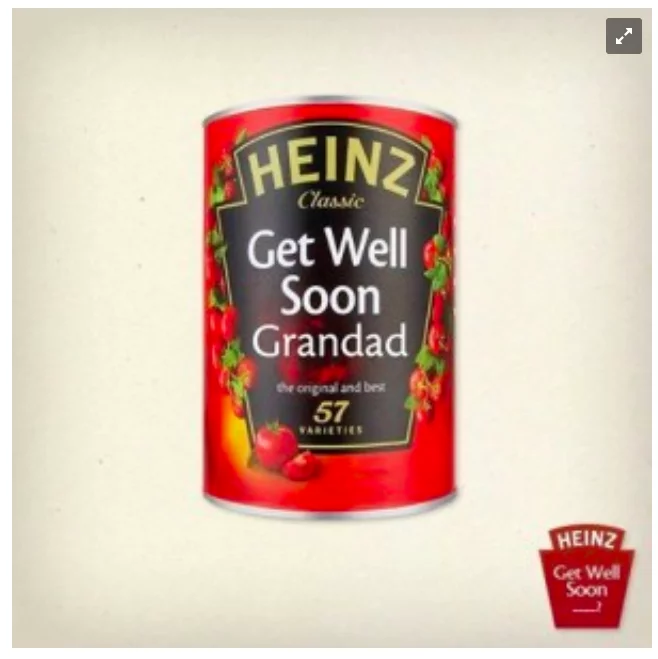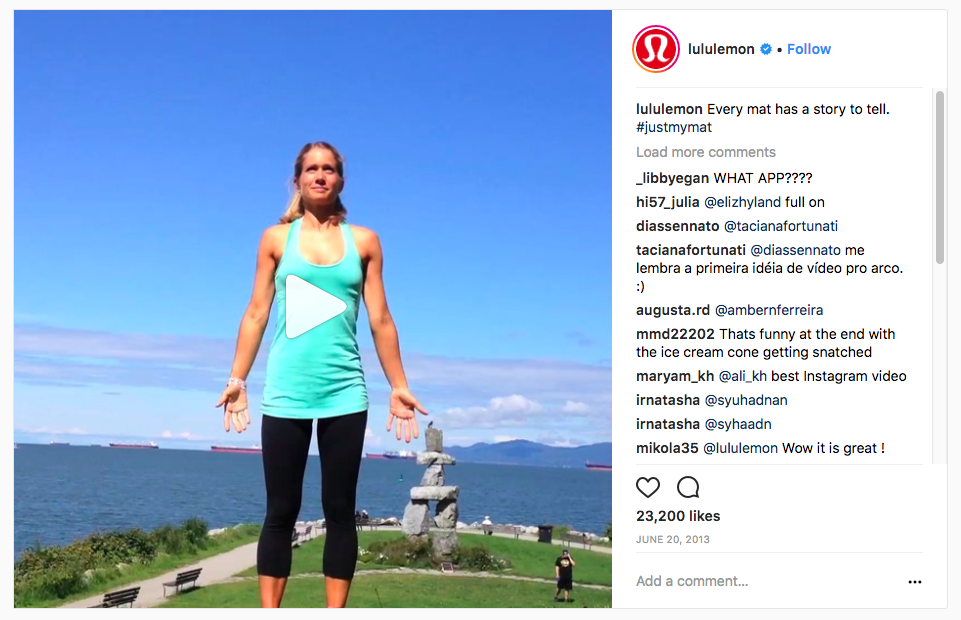Successful brand storytelling is a key component in social media marketing.
How to tell it? That’s up to you. But in case you need a little inspiration, here are nine brands that have excelled in the art of social media storytelling.

What We’ll Cover:
Why is Social Media Storytelling So Important?
Stories have long been a part of our culture.
They predate television, social media, and the internet, and they hit us on an entirely different level. Why? Because they’re emotional, relatable, and captivate us in some way.
That said, not every story resonates with everyone. Some want an adventure, while others dig a romance or want to be taught a lesson in the end.
Social media storytelling is no different. It should be emotional, relatable, and captivating to your target audience. Who you’re speaking to will shape the outline, message, and framing of your story. To make sure you hit your mark, you need to do some research into your potential audience and the things they enjoy.
A successful story is well worth any research or production effort. Storytelling for social media has the ability to connect you more closely to your customers and speak to them in a way that isn’t about the product itself, but rather the emotions and feelings surrounding it.
When done right, a story will clearly establish the core values of your brand, and offer your customers an experience surrounding those values. Your audience will feel more connected and loyal to your brand when they know the stories behind it.
Take a look at some of these brands and their social media examples.
1. Social Storytelling: Humans of New York

Humans of New York
Why it Works
With almost 18 million followers on Facebook, Humans of New York is one of social storytelling’s biggest success stories. What started as a New York City photographer telling stories of random strangers on the streets of New York City has exploded into massive brand success, including a best-selling book and travels to over 40 different countries.
This works because creator Brandon Stanton hits all three marks. The content is emotional, reliable, and captivating. Often, he breaks people’s stories into multiple posts to encourage his readers to come back and hear more of the story.
Humans of New York built a wildly successful brand entirely from social media storytelling while also opening our eyes to how other people around us live.
Key Takeaway
Focus on real humans and their stories. Grab people’s attention with emotional and educational content.
2. Dove: Social Storytelling
Why it Works
Dove’s been killing the storytelling campaign game for quite some time now. A lot of that has to do with Dove’s rejection of the use of supermodels or airbrushed ads like the rest of the beauty industry.
Instead, they focus on real people with real stories. One of their most successful campaigns showcased women embracing their curves and different stages of life. That doesn’t mean Dove’s storytelling style didn’t come without controversy. Many people pushed back on its wildly successful 2013 “Real Beauty” campaign.
Regardless of the criticism the beauty company received, it persisted because its campaign and its relatable content were making a difference. By tapping into the all too common emotional feelings of insecurity, women everywhere could see themselves in this campaign. It resonated with them.
But Dove didn’t stop there. To regain a male viewership that felt woefully out of touch with the “Real Beauty” campaign, Dove launched its “Men Care” campaign, which focused on a military man on deployment who missed his child. So Dove took the opportunity to bring his family to him.
Though it did little to promote the Dove product, it did resonate with fathers feeling similar emotions. It doesn’t hurt that the campaign was conveniently launched around Father’s Day too.
Key Takeaways
First and foremost, know your audience. Know their pain points and their struggles, and find a way to address them. This is critical for your story on social media to be effective.
Second, find a way to bring that human element to your brand. Even if you’re promoting soap, you can still address body and family issues, if it’s something that will resonate with your target audience.
3. Social Storytelling: Heinz

Heinz Example
Why it Works
You probably know Heinz for their ketchup. But one of their most recognizable storytelling campaigns is for soup.
It proved so successful, in fact, that the campaign ran in the UK for five years in a row. Talk about successful storytelling!
But Heinz went above and beyond on this one. Each can purchased came with a custom label, allowing fans to essentially send personalized get-well-soon cards, all through the soup label.
The cherry on top? Heinz partnered with Starlight Children’s Charity and donated 1 euro for every can of soup purchased.
This works on multiple levels. Through the brand, it’s allowing fans to help out the ones they love and playing on that emotion of family and healing. That story of connection resonates with everyone; after all, who hasn’t wanted to comfort those that are ailing, and what better way to do this than with a can of soup?
The fact that it also benefited charity added to the story by appealing to people’s sense of humanity. Even better? Heinz let its Facebook community choose the charity. This took the campaign to an even more personal level.
Again, this only furthered the feeling that Heinz was actually listening to and connected to its audience base.
Is it really any surprise the campaign ran so long?
Key Takeaways
Involve your audience, and make it personal. Heinz was so successful because it played directly on common human emotions.
Think about your brand’s or product’s story, and what emotions it’s connected to. Then, think about how you can use those emotions to tell an effective story.
And of course, if you can find a way to connect your storytelling campaign to a cause, do it. This is good for the cause and your brand.
4. Nike: Social Storytelling
Why it Works
Nike nailed the art of brand storytelling on social media long before it became a marketing trend.
And in 2017, they did it again with their Equality campaign. In it, Nike uses its standing as one of the biggest brands in fitness to shine a spotlight on disparities and inspire people to take action.
Using storytelling through social media, Nike also positioned itself as a powerful force for social change. It’s offering more than shoes and workout gear to its athletes – it’s offering the chance to become a part of the greater good.
So, by wearing a pair of Nikes or even interacting with them on social media, you too are supporting the movement. It’s a powerful message and one that people would be proud to be part of.
Additionally, Nike promised to donate $5 million in 2017 to organizations dedicated to advancing equality in communities across the US.
This social media campaign again draws on the principles of cause-driven marketing. And the effectiveness of such tactics can’t be denied.
According to Forbes, 70% of consumers expect brands to take public action on social or environmental issues.
This number grows bigger when surveying a younger consumer base. Nearly two-thirds of millennials and Gen Z express a preference for brands that have a point of view and stand for something, and 33% of Americans think a company’s reputation is just as important as the products it makes, often being the main reason why they’ve made a purchase from a particular company in the first place.
When it comes to brand storytelling on social media, Nike’s in the know when it comes to cause-driven efforts.
Key Takeaways
Find a cause that your audience cares about.
Social media storytelling is an especially effective tactic if your audience is in the millennial or Gen Z age range. As a whole, these two generations have embraced the push for social change.
If you can shape a story around your brand and its support of various movements or causes, you’ll gain a positive reputation and more potential customers.
It doesn’t have to be a social cause. Charities and environmental initiatives are equally effective, depending, of course, on what’s most important to your target audience. It’s important to take a look at many brand story examples to fully understand how to connect your social media storytelling to your target audience.
5. Social Storytelling: Lululemon

Lululemon Example
Why it Works
Sometimes the most effective way to use brand storytelling on social media is to simply show your product in action.
That’s what fitness super-power Lululemon did with its #justmymat campaign.
The storytelling campaign began with an Instagram brand video showing one woman doing yoga in a variety of settings. It inspired thousands of followers to upload photos and videos of themselves practicing yoga over various parts of the world, all with the hashtag #justmymat.
So why does it work?
It works because it takes Lululemon’s core product – fitness and yoga clothes – and puts it in different settings and lifestyles. It demonstrates the brand’s story of embracing fitness, no matter who or where you are.
It’s a clever use of a hashtag social media campaign that encouraged users to share their own experiences with fitness and Lululemon. It gave those users a sense of community and gave the brand a lot of social proof to play with.
Key Takeaways
Sometimes, your story doesn’t have to be any bigger than the product itself.
Try focusing on one aspect of your brand – in Lululemon’s case, it was Yoga – and bringing it to life for your users in an effective campaign.
6. Intel: Social Storytelling

Intel Example
Why it Works
Another way to use social media storytelling to connect with your followers is to literally tell your brand’s story.
Intel does this well on Instagram, where it uses powerful images and captions to show the brand’s history – its founders, notable employees, initial products, etc.
But sometimes, a brand’s history doesn’t have to be so far in the past.
Documenting the company’s latest products and how they’re being used speaks to where it is now. When combined with archives from where it started, it helps to paint a complete picture of the brand and shows the company’s evolution over time.
When you see a picture of the first computer being operated in the same feed as the latest drones being used to help marine research, it shows just how far the company has come in a way that words alone can’t.
This is an example of storytelling through social media that helps forge a relationship on a more personal level.
If followers can see the faces and understand the story behind the brand, it will help to establish common ground and build brand trust.
Key Takeaways
Show where you came from.
It could be a short story about your company’s origins with an accompanying photo of the original founders, or a time-lapse video showing then vs. now.
Even if your company is somewhat new to the scene, you can still show photos of past and current employees and try to capture the inspiration for your business through quotes and videos through social media storytelling.
7. Social Storytelling: Land Rover
Why it Works
This one takes social media storytelling to a whole new level.
In 2015, Land Rover launched its Vanishing Game storytelling campaign.
This embodied the spirit of storytelling, as it included an actual, original book launch.
The full-length, adventure thriller was brought to life through mixed media content, including dynamic video, cinemagraphs, photography, animation, sound, music, and narration.
Throughout the story, viewers could engage with keywords that were embedded with imagery and video.
For example, when a user selected the keyword “river,” they could see video footage of a Land Rover crossing a remote waterway.
Interspersed in the experience was actual footage of Land Rover owners on their own journeys, collected by Land Rover through a #WellStoried hashtag social media campaign.
Because of its interactive nature, readers can experience its multimedia through desktop, tablet, or mobile. They were also encouraged to share via social media platforms.
This is one of the most effective examples for a few reasons.
First, it tells an actual story that readers can engage and become engrossed in.
Second, it ties in strongly with the brand’s reputation. When you think of Land Rover, you think of off-roading and adventure. Driving and that sense of exploration have long been associated with the brand, and they tapped into it brilliantly with this storytelling campaign.
The story resonated quickly with Land Rover owners. It’s the emotional highs and thrills that are meant to capture the essence of the brand and urge people to purchase, and Land Rover capitalized on it beautifully.
Key Takeaways
Clearly, not every brand can invest in something as complex as this social media campaign.
But every brand can tell a story.
Think about your brand – how would someone describe it? Fun? Authoritative? Whimsical?
Then, take those emotions and build a story around them.
Again, it doesn’t have to be as intricate as Land Rover.
Remember what Dove did with its “Men Care” campaign? It built a story around emotion and featured its brand name in the forefront.
Find a way to do that with your campaign, and you’ll find a truly engaged audience.
8. Airbnb: Social Storytelling

Airbnb
Another great brand stories exmaple is Airbnb. They have launched a campaign on Instagram that speaks to their follower’s wanderlust.
Why it Works
They don’t just post generic photos on places to stay around the world.
The marketers at Airbnb take it to a more personal level by sharing snapshots of unique properties along with beautifully written captions that describe the special features of the residence with experiences from other guests.
This technique allows followers to imagine themselves in that particular location. There’s nothing corporate about it at all.
Key Takeaways
Spark your viewers’ imaginations.
Think about it from a consumer point of view.
Would you rather stay in a generic room at a hotel that everyone else is staying at, or would you rather have private access to a unique condo right on the beach?
Airbnb gives its audience a glimpse of a home-away-from-home, which is a wonderful feeling for people who want to get away from the stresses of daily life.
9. Gillette: Social Storytelling
Why it Works
Gillette is well known for using celebrities in its social media campaigns.
The best way to do this is to make the celebrity seem more relatable to the viewers. Gillette accomplished this by bringing in Shaquem Griffin, a linebacker for the Seattle Seahawks. Griffin lost his left hand due to amniotic band syndrome. So, instead of using him to sell a bunch of razors, Gillette took this collaboration to a more personal level.
Their storytelling campaign was all about overcoming obstacles and becoming your best self. While most people can’t relate to losing a limb, everyone can relate to overcoming obstacles and learning how to adapt to their surroundings.
Key Takeaways
Inspire your audience.
Nothing moves a person faster than inspiration.
Getting your audience excited is one thing, but inspiring them to actually take action is better. Gillette managed to do this by promoting a feel-good storytelling campaign with a respected, professional athlete.
Wrapping Up Social Media Storytelling
Feeling inspired to tell your story?
Good! Social media storytelling is taking over the world of digital marketing for plenty of good reasons.
If you want to build a more committed and dedicated audience, now is the time to get to work crafting your own social media storytelling campaign. Be relatable, emotional, creative, and authentic.
Remember, focus on your core values and those of your target audience. The overlap will be your sweet spot – so run with it.